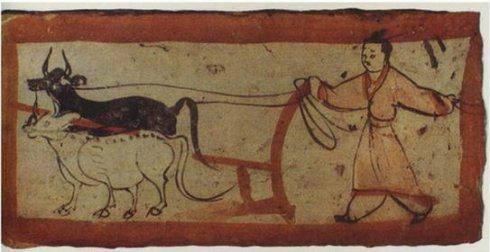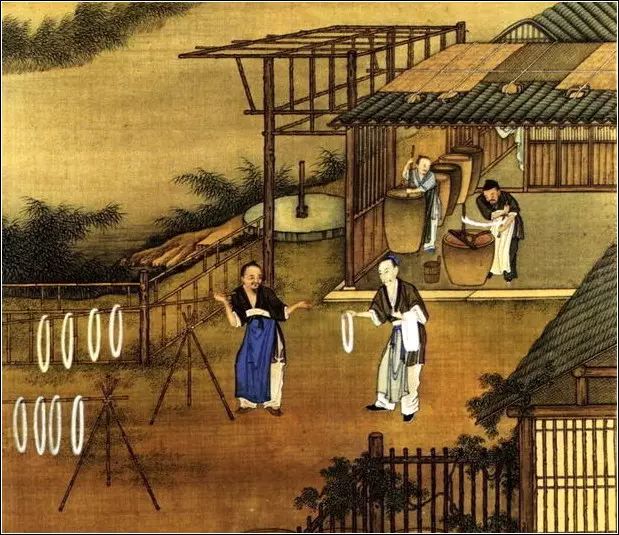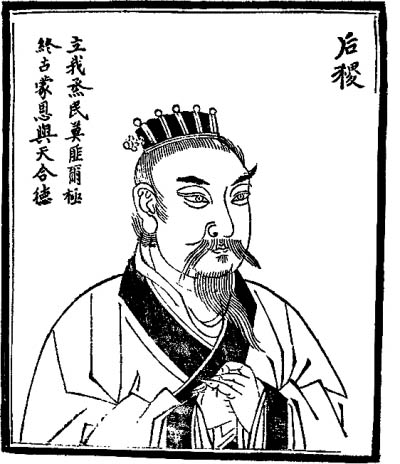Prosperity of Farming Civilization and Early Emergence of Elements Typical of Modern Times
5 min readThe period from the 13th to i8th century,the heyday of the Ming and Qing dynasties,witnessed great advances in farming civilization and all-around development in both social and economic fields.
In the second half of the Ming Dynasty,the Single-Whip Reform was implemented,integrating the original land taxes,corvee and incidental taxes into one.Taxes were levied based on land area.The reform stimulated development of the commodity economy and some rich people even abandoned their land properties and engaged in commercial business.In the early Qing Dynasty,the reform of Substitution of Farming Land Tax for Poll Tax adopted to levy taxes only according to land area,completely canceling the poll tax and weakening the personal bondage.That marks the maturity of the ancient tax system and shows the significant renovation in production relations.

There were obvious progressions in production techniques and managerial levels. The Exploitation of the Work of Nature,written at the end of the Ming Dynasty,covered about 30 techniques in both industrial and agricultural production,gainingleading position in the world.Two-season rice was promoted and unit production was increased significantly.The introduction and enlargement of the planting area of high-yield plants such as corn and sweet potato,in addition to the wide planting of cotton,significantly changed the food and clothing structure of the people.The bi increase in grain output not only satisfied the needs of the growing population,but also facilitated the cultivation of economic crops,paving the way for the flow of people from the agricultural sector to the handicraft sector,and breaking the traditional agricultural structure.
During the Ming and Qing dynasties, the private handicraft sector grew rapidly, replacing officially-operated workshops to take a dominant position. Closely linked with the market, the private handicraft sector constantly improved operations and effectively drove forward the development of the handicraft business.

Since the middle Ming Dynasty, commodity circulation expanded, with silver being the major currency in the market and commercial capital becoming increasingly active. Businessmen with huge sums of money traded and transported bulk commodities across the country, and further got involved into the production fields.
In the middle and late Ming Dynasty, some distribution centers for handiworks and raw materials appeared in areas along the Grand Canal and south of the Yangzte, and further developed into industrial and commercial cities. Clusters of numerousmerchants and Yahang, who were intermediary businessmen that introduced deals for both sellers and buyers and appraised commodity quality and prices, proliferated there. In Suzhou, Songjiang, Hangzhou, Jiaxing and Huzhou alone, there were more than 30 cities and towns in the middle Ming Dynasty, and the number increased to more than 200 in the early Qing Dynasty.

The powerful national strength of the Ming and Qing dynasties was particularly reflected in its expanding farm land and growing population. The farming fields rose from 850 million mu in the Ming Dynasty to around one billion mu in the Qing Dynasty. The registered population surged from 66 million in early Ming Dynasty to more than 100 million at the end of the Ming Dynasty and 410 million in 1840, the 2oth year of the reign of Emperor Daoguang of the Qing Dynasty.
During 1720 to 1820, the proportion of China’s GDP to the world’s total increased at a rate that was far higher than that of all of Europe. At the beginning of the 19th century, six out of the 10 cities with 500,000 residents and more were in China. From the middle and late Ming Dynasty to the early Qing Dynasty, half ofthe world’s total silver output flew into China. China was one of the centers for world economy and trade. The Ming and Qing dynasties in their heydays had obviously improved comprehensive national strength than their previous dynasties and took a leading position in the world.
A new form of business operation known as workshop handicraft had emerged in some economically developed areas since the middle Ming Dynasty.
Historical records show that in the Wanli Period of the Ming Dynasty, most of the households of Suzhou lived on silk weaving, and “most of the households in the northeast city are workshop owners.”Detailed work divisions, such as the weaver, damask worker, yarn worker, dyer and cartwright, indicated that production had reached a certain size and relative high technique. The record that “the workshop owners provide the fund while the workers labor over the work”indicates that ther was a pure employment relationship. The workshop owners bought the laborer with the fund and production materials while the laborer enjoyed personal freedom. The employers and the employees were in a currency relationship “paying by day or hour.”The records about employees “being common people who earn their own livings”and “asking others who haven’t been employed to substitute them in case of absence due to particular reasons”show that employees had their personal freedom. In Suzhou, there were also temporary craftsmen in addition to the weaving craftsmen with fixed employers. The temporary craftsmen came to different sites according to their strength and waited for employment from the big employers. This record indicates that a job market was formed at that time.
This private form of operation that combined scattered employees featured a division of labor,a high degree of socialization and working efficiency. It offeredqualitative changes when compared to traditional officially-operated workshops andsmall civil workshops. With commodity production that gets added profits from labor being its form of business operation, it highlighted free employment of labors andshows the early emergence of capitalism. The Tongsheng Well Contract (1779) in thereign of Emperor Qianlong of the Qing Dynasty, and Tianyuan Well Contract (1796) in the reign of Emperor Jiaqing, reflects that the operation forms like joint partnership,”sharing responsibilities and profits based on respective shares”were already adopted in the salt production in Zigong, Sichuan, and this kind of labor combination shows some traits of the modern stock systelm.
The changes that largely differentiated the late Ming and Qing dynasties from traditional economic modes indicate that the over-mature farming civilization didn’t remain unchanged all along. Growth of the new elements had paved the way for the formation of a modern world and incorporated the trend of evolution towards the industrial civilization.








